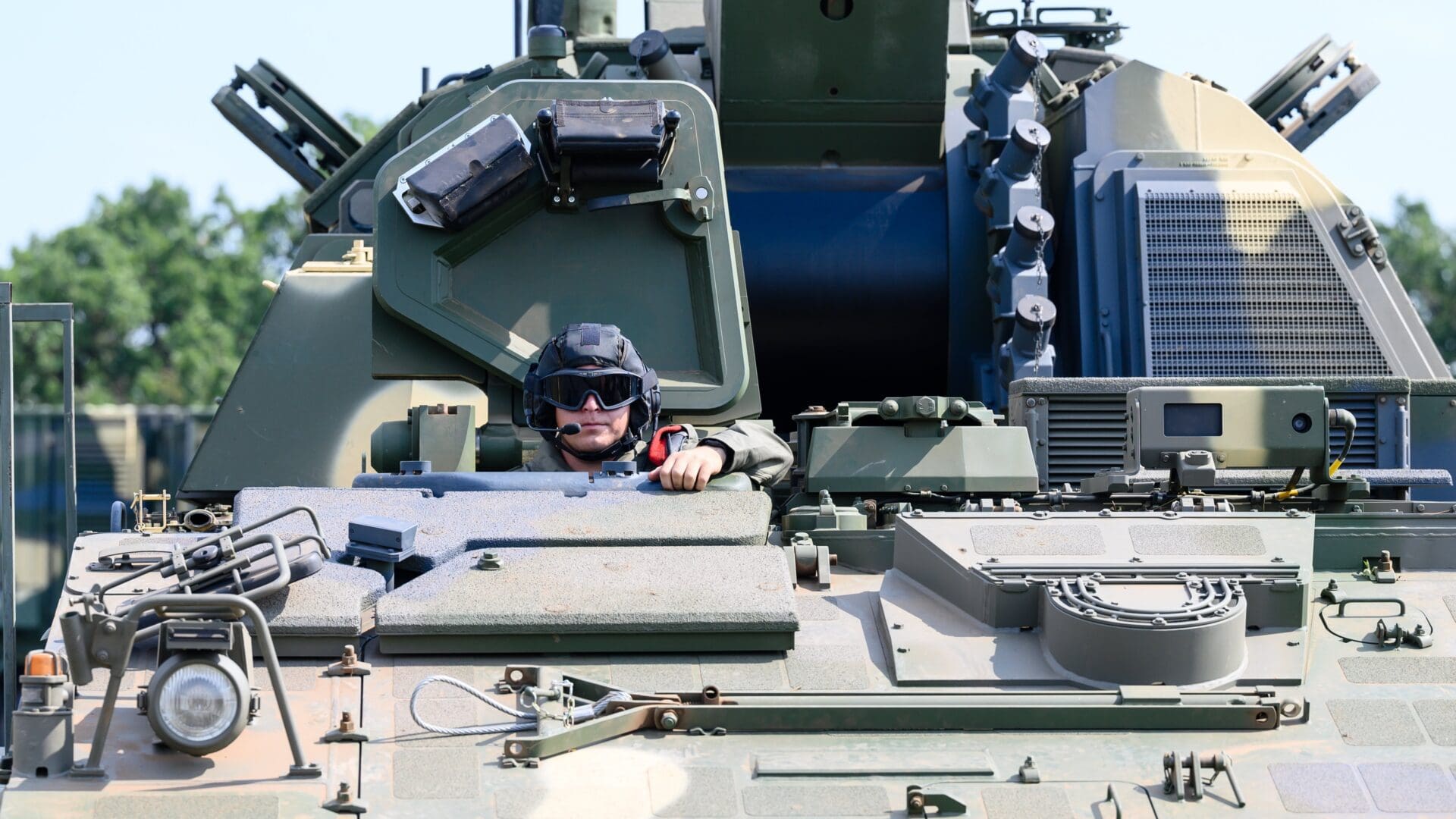In a recent television appearance, Ministerial Commissioner for Defence Innovation, Brigadier General Imre Porkoláb spoke about the current state of the Hungarian force development and the role of digitalisation and innovation.
One of the key effectiveness requirements of the Hungarian force development is to build a ‘future-proof army,’ Brig. Gen. Imre Porkoláb nailed down on public television on 13 April. In that endeavour, digitalisation and high-tech tools are playing a major, he stressed. The Ministerial Commissioner recalled that a major force development and modernisation programme was introduced in 2016 (the Zrínyi 2026 programme) the fruits of which are already visible now, with the Hungarian Defence Forces (HDF) having received several high-tech equipment in recent years.
‘Therefore, now is the time to talk about innovation, because the Hungarian Defence Forces have reached a milestone. We have to develop these tools; we have to fight in new ways and learn from the experiences we see in our environment,' Imre Porkoláb explained.
The Commissioner said that the Ministry of Defence was tasked with defence innovation by the government a year ago, but noted that numerous national laboratories and universities are cooperating at the national level on various innovation initiatives.
'We are offering cooperation to these existing organisations working on dual-use products, that is products that are already being developed in other industries, but there is also some defence aspect to them and we will look for these and integrate them into our army.'
Imre Porkoláb said there is a growing role for digitalisation in the Hungarian military and drew attention to the high-tech equipment already being incorporated into the HDF, such as the Lynx armoured fighting vehicle which is a quasi armoured computer. He also highlighted the importance of autonomous systems and precision strike systems in combat operations.
‘This (digitalisation) process is unstoppable, and we have to identify with this high-tech direction,’ he stressed.
The integration of the new technologies will also change the training system of the Hungarian Defence Forces so that Hungarian soldiers can learn to use these autonomous devices. Of course, this process will not happen so quickly, the ministerial commissioner pointed out, noting that this type of integration is a human resources challenge, not just a technological one. The Hungarian Defence Forces must become capable of not only integrating these tools faster, but also rethinking their combat methods, training and even education.
An increase in the Hungarian defence budget is also essential for the development and modernisation of the Hungarian forces. Hungary will reach NATO's target of 2 per cent of GDP defence spending in 2023, and the sector could receive additional funding in the coming years. The Commissioner also explained that this is in part necessary
because of a strategic shift in the approach to defence brought about by Russia's invasion of Ukraine.
He recalled that ten years ago, scholars and experts argued how major nation-to-nation conflicts have become unlikely in the 21st century. This perception was shattered completely by Russia's full-scale war launched in February 2022. There are serious threats in Hungary's immediate vicinity, he continued, not only the Russo-Ukrainian war, but also the migration pressure that could intensify at the country's southern border. With such conflicts surrounding the country, it is indeed necessary to spend more on the military to enable the nation to secure its sovereignty.
‘For peace, you need force. Security cannot be automatically guaranteed,’ Imre Porkoláb reminded.
But the defence budget does not only go to developing the armed forces, the Commissioner underlined. The development of the defence industry is also a priority of the Ministry of Defence. Defence innovation, he noted, also attracts smaller players and companies, offering opportunities to those who have not been able to connect to the defence industry or have found it difficult to do so.
In February 2023, the Defence Innovation Research Institute (VIKI) was established, with the aim of identifying and supporting the development of dual-use technologies that can be used for both civilian and military purposes. The institution is led by Brigadier General Imre Porkoláb.
Mr Porkoláb explained that the institution’s task is to help the Ministry of Defence attract university research institutes, national laboratories, small and medium-sized enterprises and large companies wishing to participate in innovation, in line with the development directions of the Hungarian military. For these actors,
VIKI provides the opportunity to become involved in innovation processes not only with the Hungarian armed forces, but also at the international level,
both within NATO and the EU. If these Hungarian actors wish to join a national or international innovation process, VIKI will help them do so by assessing them and helping them to get involved in an international consortia, for example.
The Brig. Gen. concluded by underlining that Hungary already has a very capable military force, and expressed his conviction that the ingenuity of Hungarian soldiers, new digital technology and the products of the Hungarian defence industry will make the Hungarian military even more efficient.
Brigadier General Imre Porkoláb studied at world-renowned institutions in Hungary and abroad, including the Royal Military Academy at Sandhurst, Harvard, and Stanford. He began his military career in 1993, and has served in Iraq and Afghanistan as well. He has had an important role in building and developing special operations capabilities for the Hungarian Defence Forces. He served at NATO's Strategic Transformation Command in the US and also worked as the representative of the NATO Allied Transformation Command (SACT) at the Pentagon. Since 2018, he has led the transformation of the HDF in the field of defence innovation. The Minister of Defence appointed him Ministerial Commissioner for Defence Innovation on 1 November 2022. In December last year he was also elected Vice Chair of the Board of Directors of the NATO Defence Innovation Accelerator for the North Atlantic (DIANA).
Related articles:







